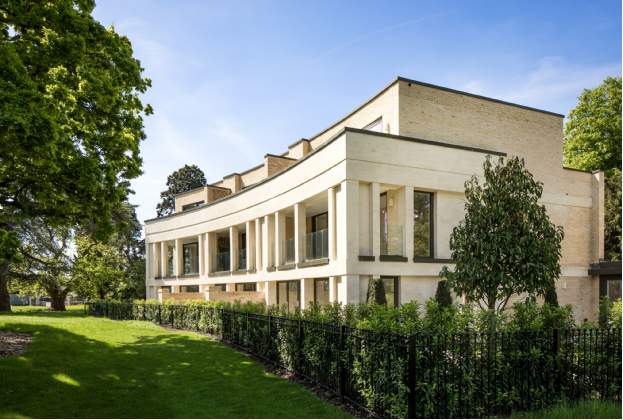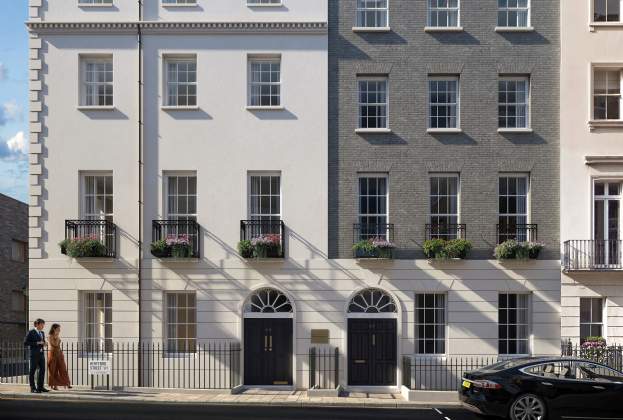We have recently released updated house price forecasts, which show UK growth to 2025 at 21.5 per cent and London growth at 12.4 per cent over the same period. But it is the shape of growth over the next four years which will prove challenging to forecast given the extraordinary conditions of the past 18 months. The London market has been particularly disrupted by repeated lockdowns and the shift to home working changing buyers’ priorities.
As a consequence, areas of the market have diverged and have the potential to continue performing very differently over our forecast period. Understanding this market adjustment and the implications for future value growth will be crucial for new build developers, particularly as recent new build delivery in London has been weighted towards inner boroughs and smaller unit size, precisely the types of property most affected by the changes of the last 18 months.
Size matters
The most notable change in London has been the growing preference for houses over flats. From 2010 to 2020, flats accounted for 54 per cent of all transactions in London. For only six months in that 10-year period did house transactions outnumber flat transactions. However, when the market reopened following the first lockdown in spring 2020, buyer preferences for larger properties became clear, with flats accounting for only 44 per cent of London transactions in the last year.
In January 2021, 60 per cent of transactions were houses, the highest proportion for any month since 1995. In 2020, flat transaction volumes fell by 30 per cent year on year, compared with a fall of just 16 per cent for houses.
This shifting pattern in transaction activity has had a concurrent effect on price growth. The ONS index shows price growth of 2.9 per cent from March 2020 to April 2021 for flats in London. This is much weaker than the growth for houses in the same period of 9.0 per cent. However, while the greatest divergence in price growth has been seen over the last year, it should be noted that flats had been underperforming houses in London since 2017. Multiple factors have contributed to this from concerns about cladding, to an increase in the supply of new build flats, and buy-to-let landlords exiting the sector.
A similar pattern emerges looking at price growth by property size, suggesting that larger flats have been less affected by this market shift. According to Land Registry data, properties of under 500 sq ft have seen price growth of 2.4 per cent in the year to March 2021, compared with 3.8 per cent for properties between 500 and 1,000 sq ft and 4.9 per cent growth for properties larger than 1,000 sq ft over the same time period.
Location
Transaction levels were down overall across London in 2020. But central locations were more severely affected. Sales in inner London boroughs in 2020 were only 66 per cent of the 2010-2019 average, but only fell to 70 per cent of the longer-term average in outer London.
The steepest decline was seen in Westminster and the City of London, where transaction levels were 1.3 per cent of dwelling stock in 2020, compared with a level of 1.9 per cent across London. The equivalent level of turnover in 2019 across the capital was 2.3 per cent of stock.
Transaction levels in outer London also appear to be recovering at a quicker pace. Both inner and outer London saw transactions bottom out in May 2020, but during the following six months to November, rose by 191 per cent in outer London and 147 per cent in inner London.
As a consequence of this pattern of growth, inner London properties now account for 38 per cent of all transactions in London, a fall of 4 per cent from the pre-pandemic level. Buyers have become more selective in where they buy, now they are less tied to the office and can look further afield to secure more space.
What does this mean for new build supply?
These changes in buyer preference have important implications for the new build market. Savills supply forecasts suggest that 51 per cent of units projected to be delivered in the next five years will be built in inner London boroughs, and based on the pattern of delivery of the last three years, 35-40 per cent of units in inner London are likely to be studio or one-bedroom properties.
However, the weighting of delivery towards inner London will be lower than it has been previously; between 2015 and 2020, 57 per cent of new build homes were delivered in central boroughs.
What do our forecasts mean in this context, and should developers be considering new strategies? The performance of different parts of the market will depend on whether the buyer preference for increased space persists. As the economy opens up and more employees return to office-based working, the trade-off between space and a central location could begin to tip back to smaller units in inner London.
The resurgent rental market seen this summer suggests this shift is already underway. However, if working from home arrangements become more permanent, space is likely to remain a key market driver. Equally, the locations that have experienced strong growth in 2020/21 may have less capacity for growth over the next few years, particularly as interest rates are expected to rise a little earlier than leading commentators had previously projected.
Further information
Contact Emily Williams or Katy Warrick
.jpg)









